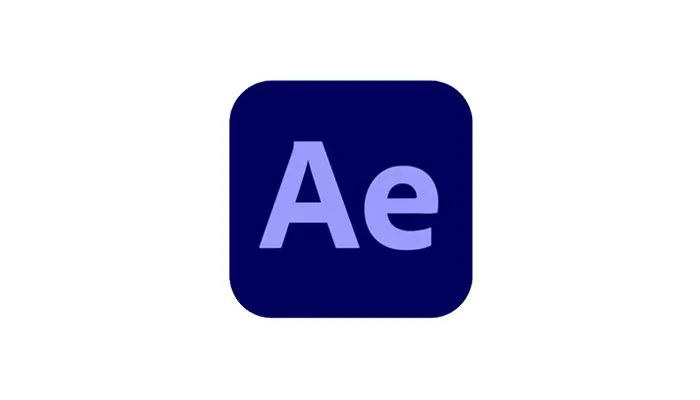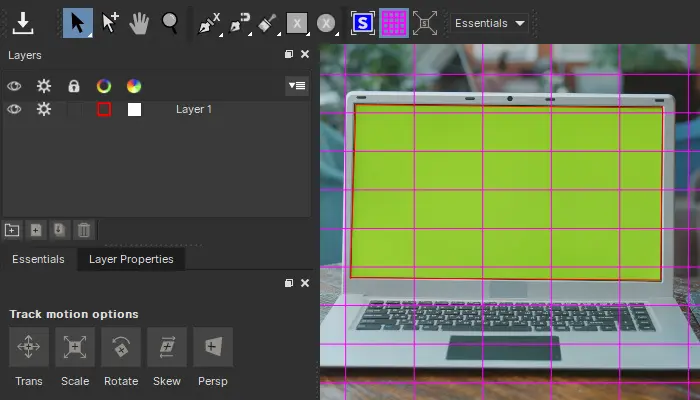Today on Art of the Cut, we speak with four members of the editorial team for Gareth Edwards film, The Creator. Joining me to discuss the challenges and rewards of this film are Oscar winning editor, Joe Walker, ACE. Also Oscar-nominated editor, Hank Corwin, ACE. We’ll also be talking to Scott Morris, and Job ter Burg, ACE/NCE, who served as additional editor.
Walker’s credits - just the ones he’s been on Art of the Cut for in the past - include 12 Years a Slave, Sicario, Arrival, Widows, Bladerunner 2049, and Dune, for which he won the Oscar.
Corwin was nominated for Oscars for Don’t Look Up, Vice, and The Big Short, for which he won the ACE Eddie. He’s also been nominated for an ACE Eddie for The Horse Whisperer and was an additional editor on JFK which won the Oscar for Best Editing.
Scott Morris edited the feature Armageddon Time and was an additional editor on Don’t Look Up and Ad Astra.
Job ter Burg, ACE and NCE, his films include Benedetta, Elle, Brimstone, Black Book, and The Informer.
Art of the Cut: The Creator
Job, you mentioned that you were remote. How did the remote work with all these other guys? Scott and Hank were all in LA on the lot, Joe was cutting out of his house.ter BURG: I was working from Amsterdam. I was in my attic room where I have an Avid setup, but I was using Jump Desktop to log in to a machine in LA, and that machine was at Joe's place at first, so it was pretty much like we were in the same building on shared storage — in different time zones. And then once Hank and Scott came in, they were working at the Fox lot, so there was a room with a machine that I would “jump” into using Jump Desktop.
How'd that work.ter BURG: To me? Seamlessly. And even when we did our original testing, I was a little anxious about it because I wasn't sure that was going to play over that long a distance, but it was seamless. There's hardly any delay, so it was the same feeling as if that machine was right next to me.
This is not a group that has worked with Gareth before. Joe, I think you were probably the first one on the film.
WALKER: Yeah. And actually it's a bigger group than this. My assistant, Chris Voutsinas, helped me assemble. He has an assembly editor credit on the film and he helped chunk some things down and put them together very stylishly. Dylan Merriman was our second and chipped in some cuts and did actually a very fine cut of the border sequence, which I remember being slightly intimidated by, to be honest. It was that good.
What happened was I met Gareth and was offered the job, but I was already committed to Dune 2, which was going to start in the summer in Budapest last year (2022). And the pandemic kept pushing the creative back and back and back, and it ended up with me saying, I can only do the assembly and we need to find a great pair of hands to take over. So it was already built in that there would be a handover at the point where they finished shooting. So I spoke to Gareth a while back. I spoke to some of his earlier editors and I knew Gareth’s work very, very well and really admired him, and I really love his kind of filmmaking spirit. Monsters, actually, I was super-impressed with that and his desire to do a film in a way rather unconventional in Hollywood terms. To be specific: shooting on semi-pro gear. I think he shot the whole thing on a Sony FX3 with an anamorphic lens. And then it was shot with a very few people in the room, just Gareth and the cast and a very few others so that he could shoot 360 degrees and that he could shoot ad libitum (at the discretion of the performer.) The FX3 allowed him to do long takes — 30 minute takes sometimes. I also knew from talking to his former editors to prepare — to gird my loins, as it were — for a large amount of material.
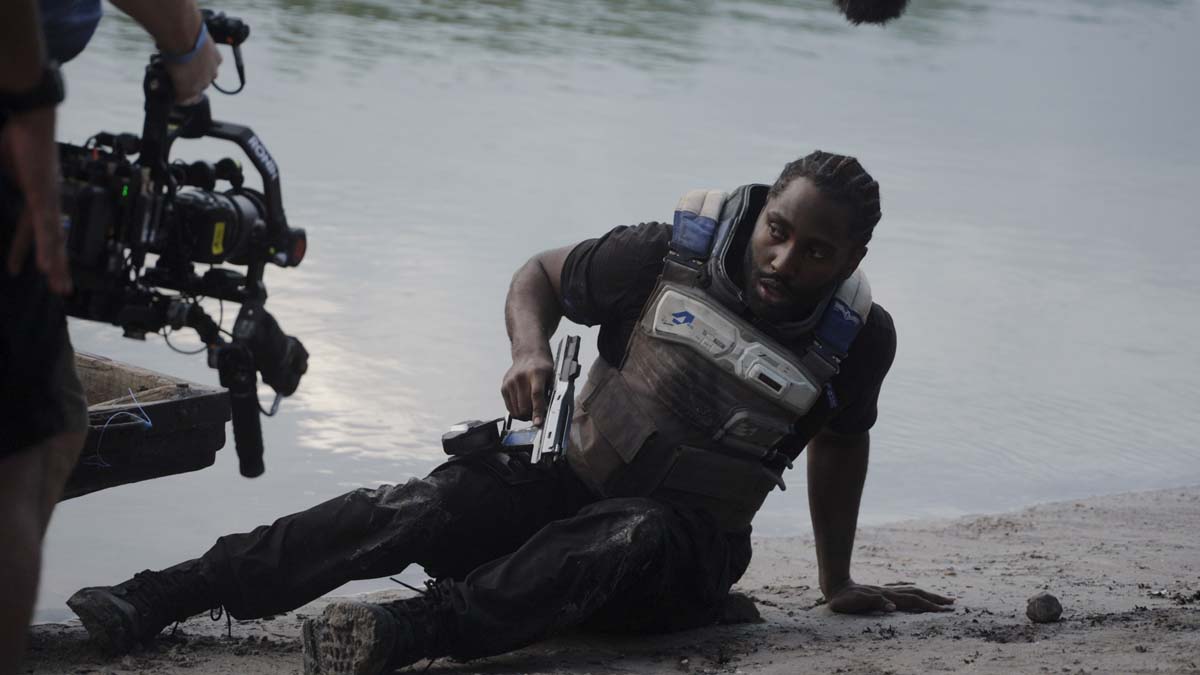
He liked to do very improvisational takes and a lot of the kind of grittiness of the film that I so love is achieved by that — by shooting freely and kind of going with a lot of adlib in the performance from John David particularly, and in sort of these crazy real locations. One of the great things he wanted to do was to be able to shoot free of green screens. There are very few markers. There were a few dots on Alphie’s face, but very little else. He just wanted to be able to kind of shoot whatever was in front of him freely and then for us to assemble it, but knowing that that would mean a lot of material. I think it averaged out at about 5.5 hours a day of material. It’s a lot and a lot more than I'm kind of capable of doing on my own, so I kind of knew I needed a bigger boat. I've wanted to work with Job for a long time. We met in Holland in 2013. I was working on 12 Years a Slave in Amsterdam and Job reached out and I knew his name from the forums. I've followed his career since and we've always been trying to find an opportunity to kind of work together, so Job joined me to kind of chunk it down basically, and take big chunks of the movie and separate it into boxes to be able to kind of concentrate on one thing for a sufficient amount of time.
 Joe Walker, ACE and Hank Corwin, ACE
Hank, this is specifically an unusual film for you. How did you get involved in this and why was this a project that you were interested in working on?
Joe Walker, ACE and Hank Corwin, ACE
Hank, this is specifically an unusual film for you. How did you get involved in this and why was this a project that you were interested in working on?
CORWIN: I think precisely because it's not the kind of film I work on. I always try to challenge myself. Joe gave me a call. I'm a big fan of his and his work. I never get involved in other people's projects or I haven't in years, but I thought it'll be a real exercise in collaboration. And I saw some of the footage that Gareth shot. It was exquisite. Joe asked me to come in. I brought Scott Morris, our other editor on this. They had put together just an exquisite assembly. It was very long, but it was very comprehensive. Again, I'm not used to working that way, but I found that I was able to get in very deep into what they did.
We've talked before about style with you, and the fact that we've always talked about is that no editor has a style or should really have a style. Is that something that you feel is true or how do you express style as an editor?CORWIN: I'm certainly not one who's been a proponent of invisible editing. You have “horses for courses.” I would hate to be thought of as just a guy who is enamored with technique. This film and what I brought to it was certainly not stylistic. Hopefully it was emotional and spiritual. That's really what Scott and I were going for, because Joe and Job had put together such a lovely assembly. It was about five hours long. They were five very good hours. Working on a Terry Malick film, he would have just put head and tail leader on it and called it a day. (Group laughs).
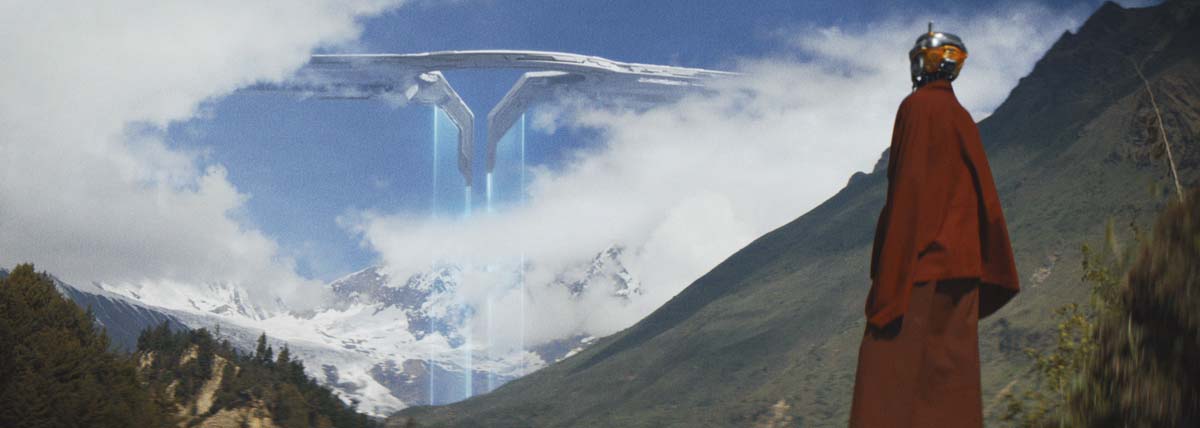
WALKER: I think that was originally a very strong thing about reading the script was this sense of spirituality, the possibility. The kind of connections with Buddhism and the placing of it is a very appealing part of the story to me. I like that it's there — sometimes kind of overtly and sometimes kind of quite buried. Thinking back a year and a half or something, when I read the script, and started working on it, it's kind of funny to think of basically a pro-AI film with the writers strike just behind us. I'm not sure it would be quite such an easy sell at the moment, but it was this idea that the universe appears in many forms and the idea that the universe — some kind of energy dances within us and a kind of strong sense of reincarnation that's explored in the film.
My favorite scene in the script when I read it was the guy being reanimated in somebody else's body, which I always thought was just like astounding. And it was also turned out to be a really great performance. That guy was amazing. I didn't really see iterations of the film. I saw the kind of final cut quite recently and I was blown away about how Hank had elevated all that and made it the journey of John David, particularly in this film, is kind of very appealing. Brought that to the surface.
I wanted to explore that idea of ad libbing during performances because that can really cause some editorial tricks. I've worked on productions where the actors are kind of allowed to riff on the script and you never get two takes that are the same. Job, was that something that you had to deal with or cope with, and had you done that before?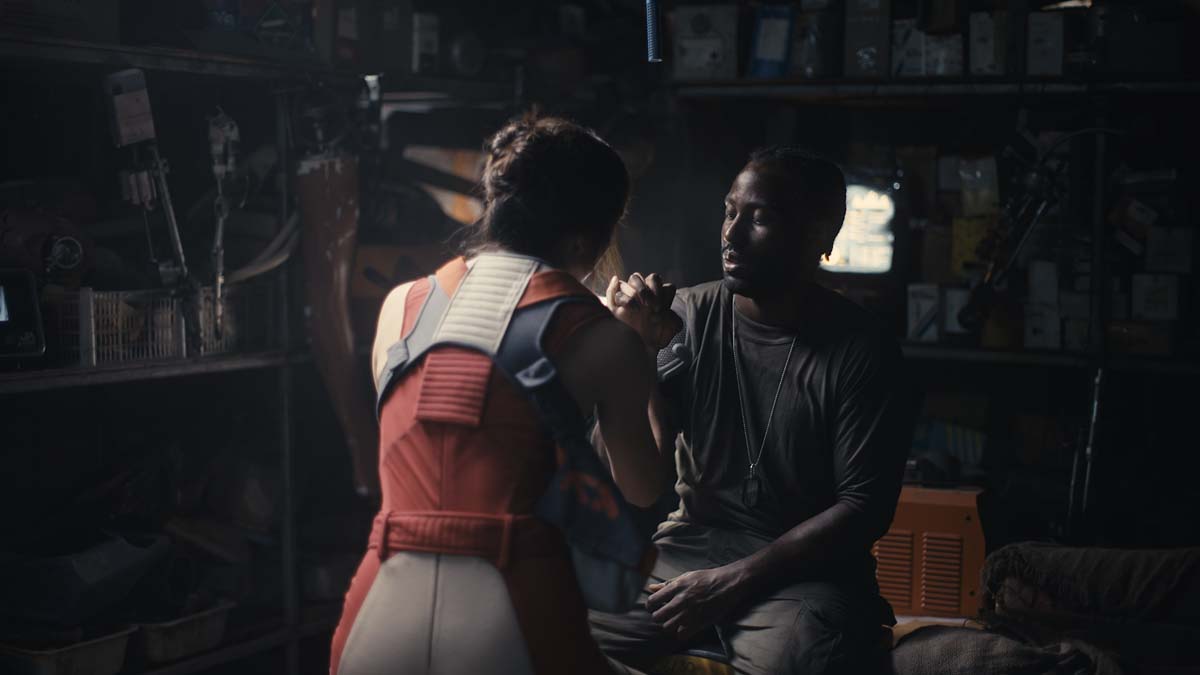
ter BURG: I had done it, though not to the extent that it was done in this movie, I have to be honest. And it was great. It also meant that with the way that Gareth shoots it, with these long sort of leaving the camera on and just start shooting stuff and trying stuff, I don't think there was ever a rehearsal, right? There was. It was just at the beginning of the of the day that would just flip on the camera and start trying to see how we would enter the apartment and see what he could grab and then build from there. Just take a few steps back and try something else. So that basically meant that you were sort of hunting for — as a good documentary editor would — start to figure out the great bits and start organizing them in a way for yourself to have an idea about what it could be, and then trying to form them into scenes that by themselves make sense and work. But what Joe and I both found was that there was stuff in the scenes where — because it was ad libbed — you could either play it that way or this way. So sections of the scene could actually be done in different versions. So especially because I was sort of working with Joe and trying to make sure that he had what he needed for the assembly to go on with and understanding that at some point we would not be on the movie anymore and somebody else would have to start finding a way to find stuff in there. We would build our primary sequence and then add alt chunks to the end so that hopefully by the time somebody else came in they would open that up and would find some interesting bits in there to sample from and to include in what was then the cut of the movie.
Because obviously all of that depends so much on context, right? So things change. In your assembly, you're going for something and at the same time you are aware that some of that will change or you will have a new idea in the context of the movie and how everything progresses. And then somehow you need to make sure that, there is a trail there — that you leave breadcrumbs for yourself and for anybody else to sort of find their way through all that.
Scott, you were one of those people that had to deal with the breadcrumb trail. Were you able to use these alts and things that Joe and Job created?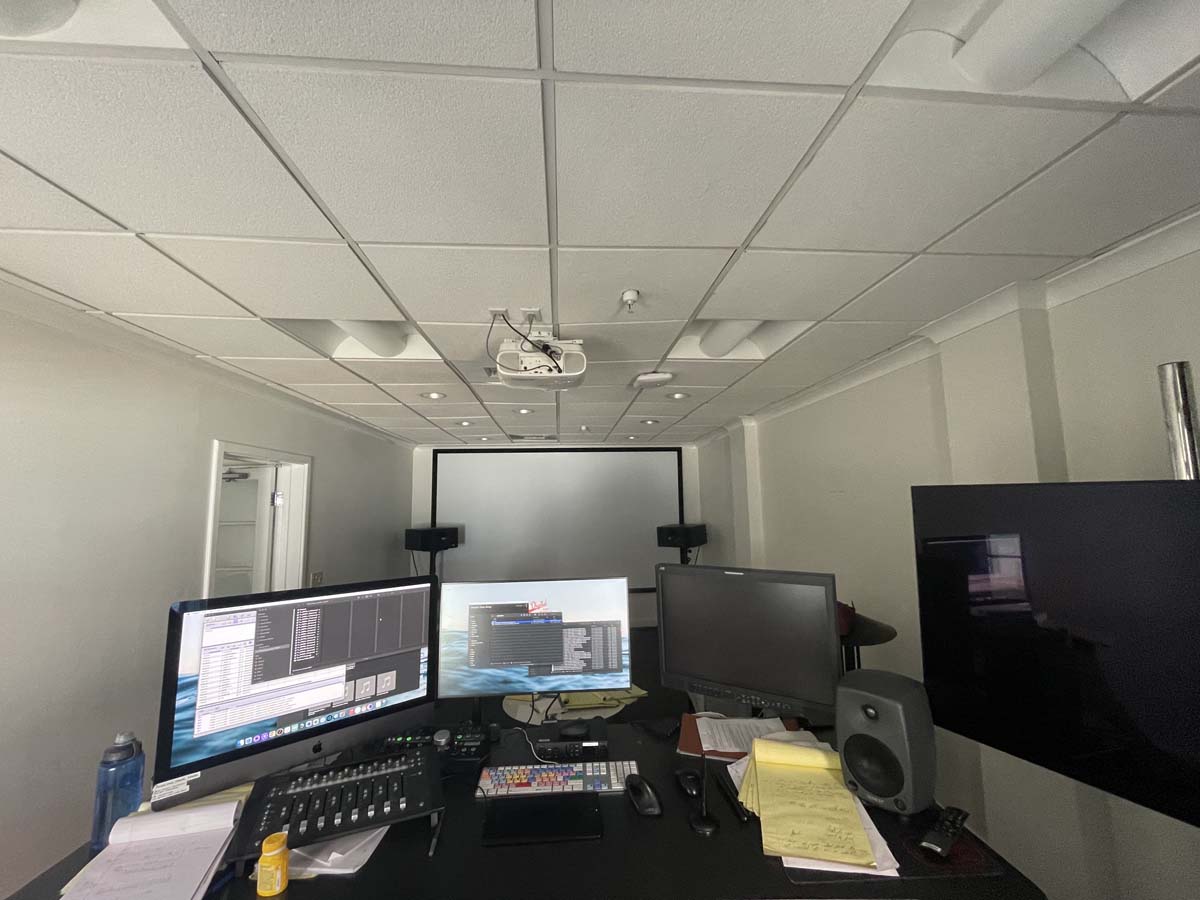
Scott's Avid cutting room on the FOX lot.
MORRIS: It really helped us out as we were kind of diving in. We would watch the cut, but then we would have this additional alternate version that we can kind of familiarize yourself with. And we would watch as much dailies as we could, but it was a bit of a sprint as we were coming in to this huge project. And thank God it was so well organized by you guys. But yeah, it was, it was a lot to kind of wrap our heads around so quickly. It was great that there were two of us.
CORWIN: The kind of filmmaking that Gareth does, for me, it's pretty much what I love. I love keeping the camera and keeping the performances really loose and having improvization and just really finding the truth in a moment. And Gareth — because he wasn't going with storyboards — at least none that I know of, there were all kinds of random moments that really were very authentic. Hopefully we were able to impart in our characters a whole sense of being genuine because my big fear was just the fact that this is like kind of a blockbuster film, but we all came at it at very different sensibilities.
For the four of us, there was nothing superficial about this film.
Since the performances were flexible, did that allow you to mold scenes in different ways because of the temperatures or the ways that the scenes were delivered? Maybe you were able to say, “Oh, it's going to be an angry scene. It's going to be a hopeful scene.” How did the ad libbing of the performances allow you to change stuff?
CORWIN: The scene where Alphie and Joshua are riding in the bus, the way the assembly was, there was an arc to Joshua's behavior. We had to ascertain what we were trying to convey. What emotion Joshua was feeling? Was he frustrated? Honestly, I would have liked the scene to be a little longer so we could have had a bigger arc going from being really irritated with this kid to kind of falling in love with her. We just didn't have that luxury.
Scott, since you were kind of on the back half of this: trying to get this thing from five hours to two and a half or whatever it is — 2:15 — how do you maintain things like character arcs when so much of it has to come out?MORRIS: Well, that was the focus. You know, there were all these set pieces and all this action and all this exciting genre stuff, but we just kept focusing on the characters and the story and their relationship. It's Joshua and Alphie and Joshua and Maya, and we just kept trying to inject as much of that as possible. That was our North Star, the entire process. So if we had to lose things, it was always the pieces of the film that were not focused on that, We wanted to focus on making this work as a “live action” film. We didn't have VFX in when we were cutting, so it was just: can we make the relationships work and treat it more from an emotional place?
Obviously the set pieces were really fun to put together as well. But all the set pieces were all about character. For instance, in the third act when they're in space, you know, we always tried to remember: what's going through our character’s minds and what matters to them and just keep grounding it with them because the spectacle was there. It was always going to be there. It's beautiful, but the other stuff is what kind of got cut down. It was always about emotion and character for us throughout the whole process.
CORWIN: Fortunately, Job and and Joe had really thought that stuff out. The arc of the entire film was there and we had the luxury of being able to focus on emotion and spirituality.
ter BURG: There's another thing I'd like to point out is that apart from the main principal photography, Gareth also went out for about a month, which was called a plate shoot, but it wasn't plates. It was just him grabbing a whole lot of extra stuff in the different countries they had been in — and some places they hadn't shot in yet. I'm not even sure how much of that ended up in the movie, but there are some key shots that really expand the production value of the movie and also the feeling of the journey and the vastness of the world that they go through. That was basically sort of snipped out of all of that that was shot there, which was an insane amount of stuff. Sometimes it's even used in some of the set pieces and the action things. But there's also that journey that Hank was mentioning earlier with a bus ride and stuff like that. There's some great beats in there, I think, that stem from that extra shoot.
CORWIN: It's remarkable, just the fact that he was shooting it on a little consumer camera, his little Sony F3, albeit with a really good lens. How courageous. What a guy. You know, what a filmmaker.
ter BURG: And that freedom even went so far. Is that normally on a film set you have people with microphones on booms to sort of follow the sound. He had the same thing for light so that he could move anywhere around the room. So there was basic lighting in a set, but he'd also have these people walking around with with light just to fill in that wherever he turned his camera, there would be something suitable and usable in a very smart way.
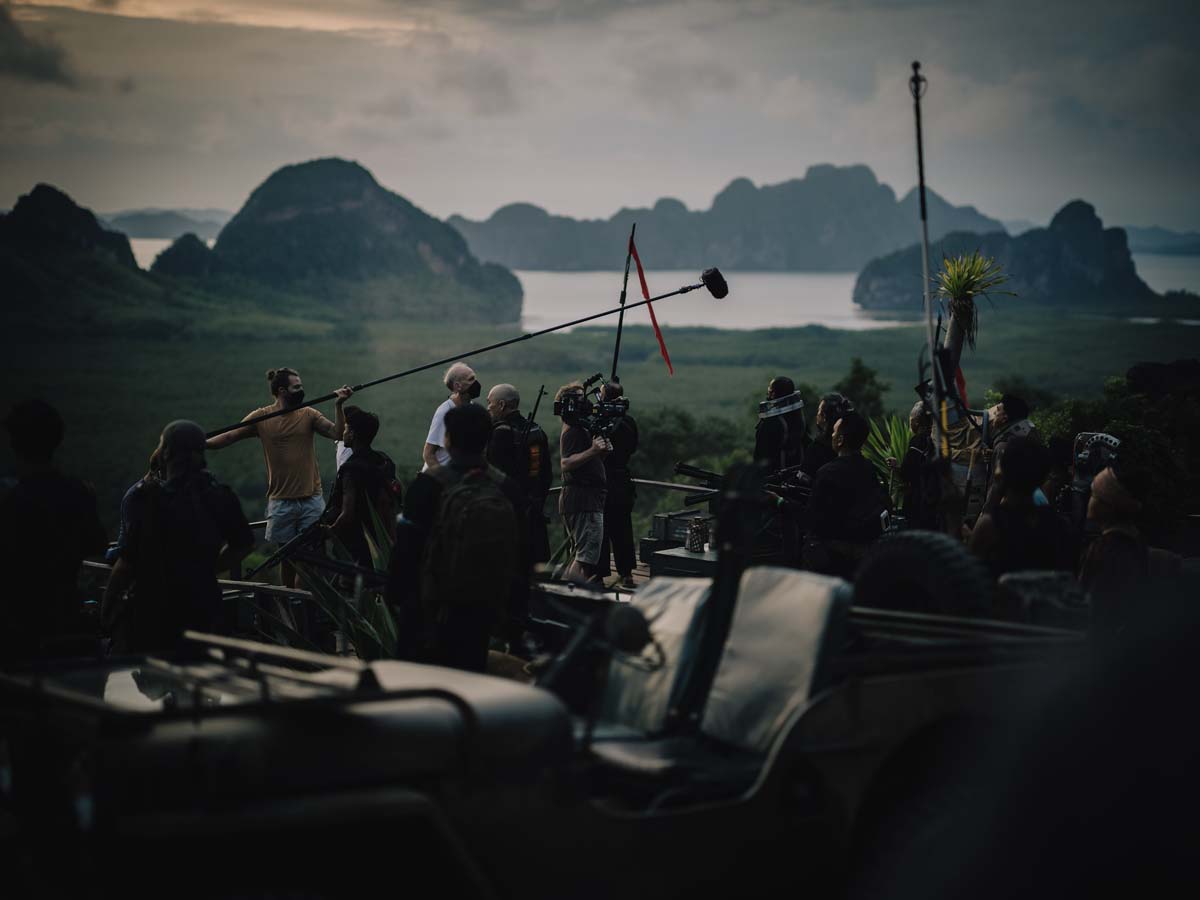
WALKER: His original pitch to me was that he wanted to make this film like a cross between Bladerunner and Baraka (1992). One of the things that the little Sony FX3 enabled him to do is to shoot in extremely low-level lighting. He could shoot moonlight, apparently. And so lots of those scenes have got those kind of really interesting grungy lighting — even inside the factory, which was quite a dark place with kind of a tubercular look from the neon in that room. He would shoot in these real locations. I think that was the first material that we got in, wasn't it, Job? It was the denim factory, which is where they replaced what’s on the machine to be a robot being stitched together. That was one of the features of the thing.
The other big thing that appealed to me is also the fact that it's an ideas-driven piece. These days, original sci-fi is kind of rather a rare thing. Most things are kind of franchises or based on video games or, soon to be everything based on a toy. It's very brilliant to be in a kind of notional realm. And a word on performance — you talk about performance and the ad lib nature of it — one of the kind of key things about that was to be able to capture this incredible relationship between JD and the little girl who plays Alphie, Maddy. There was a real relationship both on and off screen in terms of encouraging those incredible moments between them. It's something very, very hard to look at even in dailies form — just to look at the separation moments between them, which is sort of so striking and so invested. And that little girl could nail things.
But Gareth, being free to be able to kind of shoot long takes and to kind of adjust. Sometimes he'll be on a shot and you're looking at it and then he suddenly lifts up and moves to something else maybe better. The old drama brain of mine is saying, “Hey! What happened to that set up?” But he goes in and finds something even more cool. He kind of knows what he's got as well. I'm sad that I didn't get that part of the experience. I'd always wanted to work with Hank, but I never imagined that it would be in a serial fashion. I was hoping that we would work together. It was an experiment to kind of work in this amazing team in a way as well, which, seems to have worked out quite well.
 Assembly editor and Joe's first assistant editor, Chris Voutsinas' cutting room.
Was there a difficulty in organizing things or being able to find things when it's not typical coverage where you’ve got a bin with six takes of set-up A, then four takes of set-up B and it’s all cut and dried?
Assembly editor and Joe's first assistant editor, Chris Voutsinas' cutting room.
Was there a difficulty in organizing things or being able to find things when it's not typical coverage where you’ve got a bin with six takes of set-up A, then four takes of set-up B and it’s all cut and dried?
WALKER: It is a little difficult to adapt to that. My typical thing with the things I normally get is: I would look at all the versions of a line and have it in a KEM roll and you're sort of constantly chunking down and sometimes your assistant does that, but also I sometimes do that process as a way of getting familiar with every performance. And I've always had this duty, I felt, to kind of see everything and to know later if you want to kind of find a performance that's lower temperature, for example, you'll be able to find it — from memory, you just recall these things — but you couldn't do that with this. It's impossible, I think, to kind of cut 5.5 hours of material in one day. Absolutely impossible. And the only way that we could tackle it was by chunking it down in different ways.
Lastly, my assistant, Chris, would often prep me a reel of footage where he would actually pre-ordain the beats that are definitely intended for inclusion in the film because Gareth is waiting and he's pointing at something, but actually it's not a dynamic part of the movie. All of that is just to sort of save your decision power as an editor. Rather than dwelling too much on something that absolutely isn't even intended, you sort of edit all that out and then it sort of it narrows down the amount of choices you have to make in a day, and that's, a limited number which is based on how long you've got.

Joe Walker's home cutting room.
Also working in collaboration with Job is the other way to sort of chunk it down so that — Job, for example, took over the whole trestle bridge sequence — which when it started coming in, I think we both realized was going to be a huge amount of footage to process and a super complicated scene. So Job just basically took over the whole of that at one stage.
ter BURG: I think I did that and I just went down for like eight days — dove into that — wasn't able to look at any new incoming dailies and just took eight days to dive into that and try and sort of get a coherent structure into that and make it findable again. That was a pretty tough one to tackle, but once it was there, there was actually a lot of great stuff to plunder from. It was much longer than it is in the movie now. It must have been 12 minutes or something: that assembly of that.
There was this other technique, Joe, that I'm not sure you remember that you did, but you had Chris and Dylan break down our scenes often because we didn't have standard coverage, so they broke things down to the footage representing around 30 seconds or half a page of the script, so basically going from one section of a scene to another section of a scene, but then just roll all angles for around 30 seconds of the scene, so you'd have a huge selection of all takes, but very specific for, for a moment in the scene that would sort of help us find structure. From there we would lift moments that appealed to us, so within those 30 seconds, some stuff you would discard and with some takes there would be one little look or one little camera move that we would lift.

Image from the first day of dailies.
WALKER: There was one scene where there's a soldier menacing a little girl by threatening to shoot her dog. And I remember there was such a large amount of material for that. It was all really great stuff, so you're torturing yourself not to be able to use everything, but one way of looking at that was to sort of chunk it down into those sections 30 seconds at a time, and it helps you just narrow down and get a quick overall picture of what's the best way into the scene and what's the best thing going on. What little bits do you want to pick up that all add vibration and color. Also I kind of grade my reaction to things. I always use the method that V1 it's probably not going to be in. V2, I kind of like it. And if you're V6 then it has to be in the film. I would sometimes do that and then hand that scene to Dylan or Chris to assemble and try and navigate their way through it. It was a way of trying to kind of control more than I possibly could on my own. It was like a sort of technique. I use that quite a lot. It's just chunking things down. I think, honestly, I'm not the ideal editor for this material. I think because you have to be fearless and I'm not fearless really. If I'm being honest, I'm kind of bothered very much by what I'm not putting in. I fear putting in the first thing I find rather than really exploring everything. But I think you have to have a kind of documentary sense about the footage to really kind of go through it more easily on your mind.
CORWIN: I think Joe is being a little bit self-effacing. I think Joe and Job and their crew and Scott and I and our crew really worked well with the material, even the fragmentary nature of it, the fact that we had these fragments. This is the kind of footage that I thrive on. I was able to take these little moments and just make them kind of impressionistic, like brain synapses.
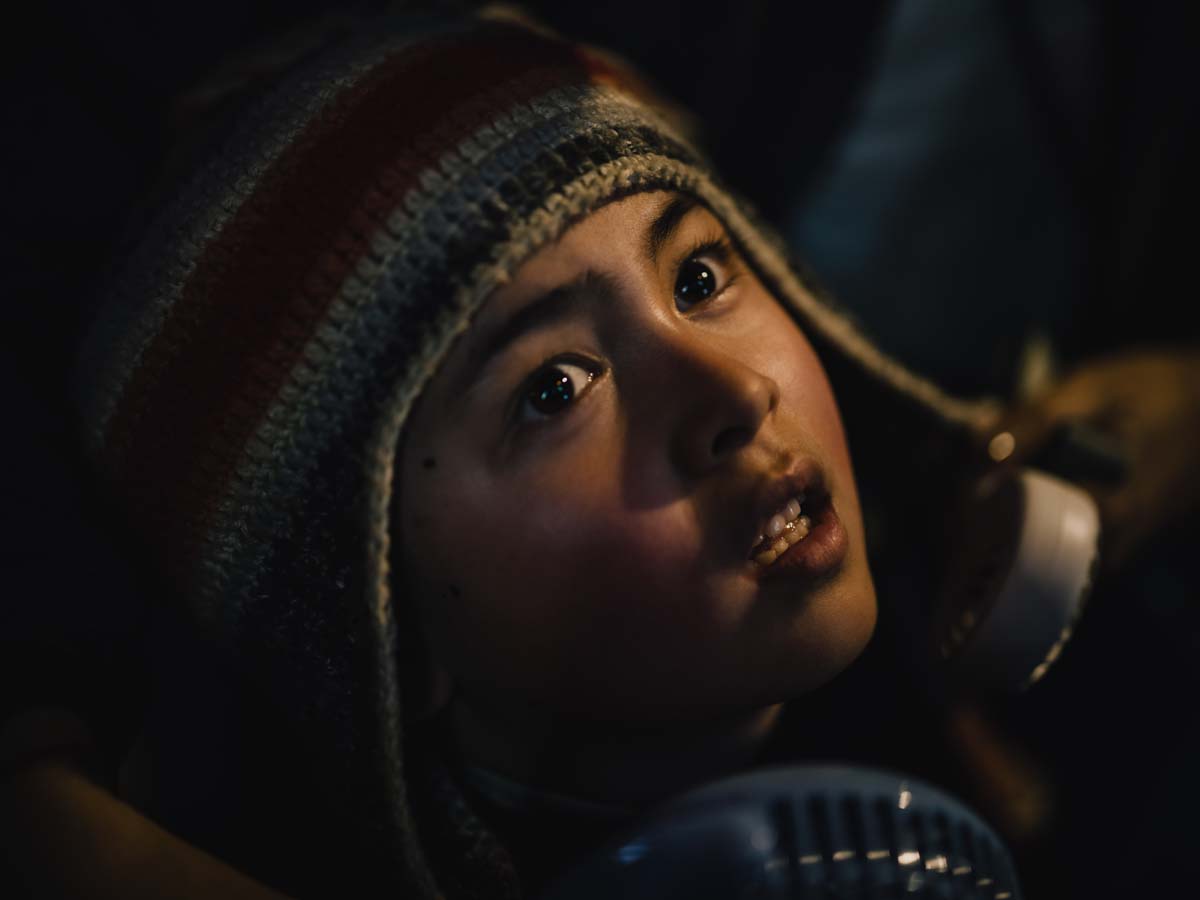
ter BURG: I'd also like to say, though, that that approach of this synaptic sort of connections in the movie, I think what Hank and Scott did with that saved a whole bunch of stuff that would otherwise have gone under. When people are trying to cut down a movie from five to 4 to 3 to 2 to 2:15… Some of that material that would’ve been lost is just woven in, just like little reminders, like little memories of something or tiny vibes of surroundings and of moments and of beats that happen, that sort of do something to your mind and, that are always tied into character.
CORWIN: Scott put this exquisite little piece together of the funeral pyre scene. Unfortunately, it was kind of a discreet moment and when it was thought that the film was too long, that was something that would be very easy to get rid of. It's just very fortunate that we were able to weave just a few little moments of that funeral pyre stuff. At least we have the spiritual component.
One of the scenes that I was thinking about the fragmentary emotional feel is a little montage that happens right before The Mother title card comes up. That came about a little later in the process.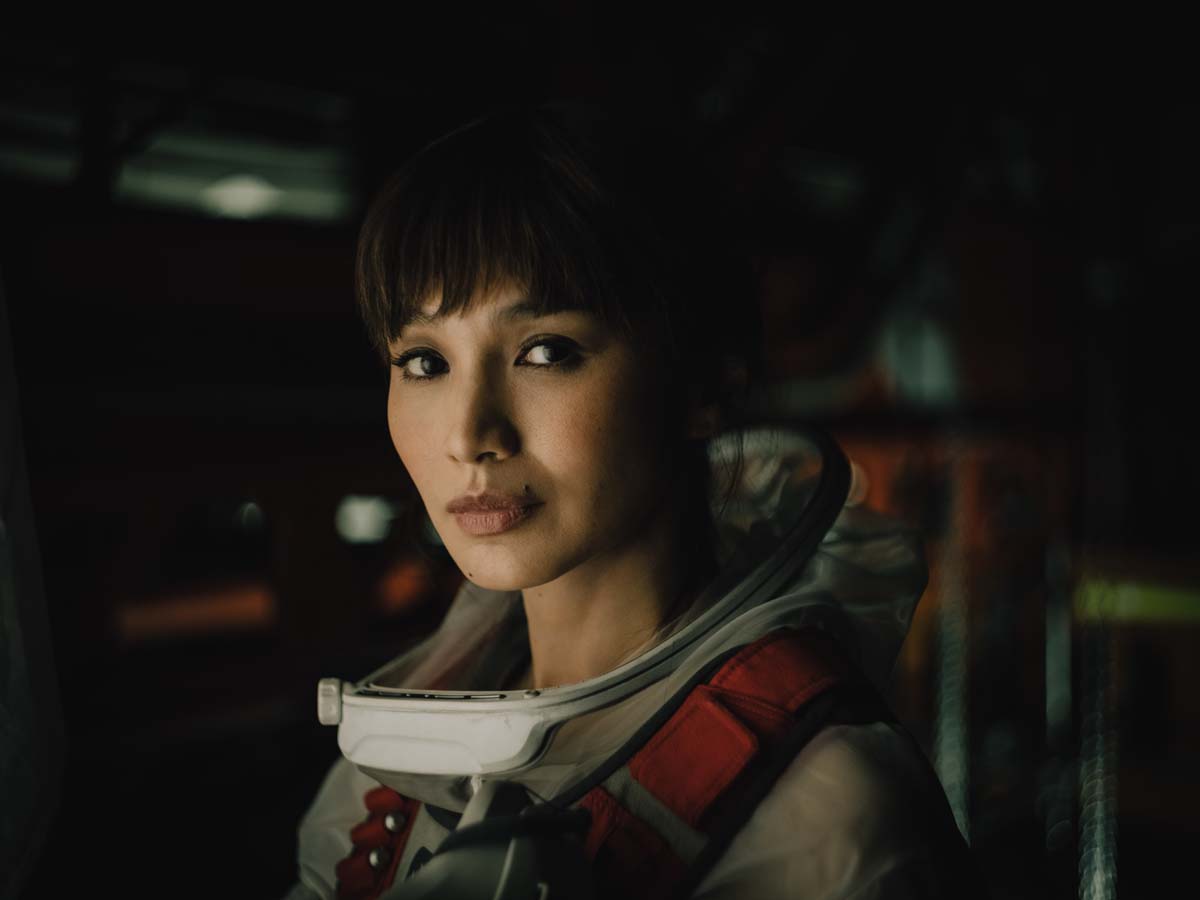
MORRIS: That was something Hank took the lead on. We called that montage the Maya trailer, but it was kind of going into her backstory. That section is coming off of a big character reveal moment, and Josh is learning something new. And it was about him diving into his memory and it's very internal and it lives inside his mind. And the idea was to process that in a way where, he kind of had some trauma with his memory, early in the film, and it's about him trying to come to terms with his past and, information at that point in the film.
CORWIN: Ultimately, we really didn't have enough material on Gemma Chang. It was very important to us to make her very strong, make her very feminine, just give her a back story that influenced his story. Honestly, it's the kind of flashback flash-forward that, on another film, I might want to drop out sound, I might want to actually go to black and white or just go to slugs of black. Just hear the poetry of what he was saying. I think we were able to make her a more fulfilled character and make his desire for her be more realistic…
ter BURG: And tangible, Hank. Her presence was something that is difficult because his arc is trying to find her, so for large chunks of the movie, we don't know anything or much about her and he's trying to find her. And in the meantime, we want to reveal some of the backstory. But you don't really have time to really flesh that out, but you sort of have to keep that presence of her. And I think you guys did a great job at that, like keeping her an active memory in his mind and something that he can't shake out of his head.
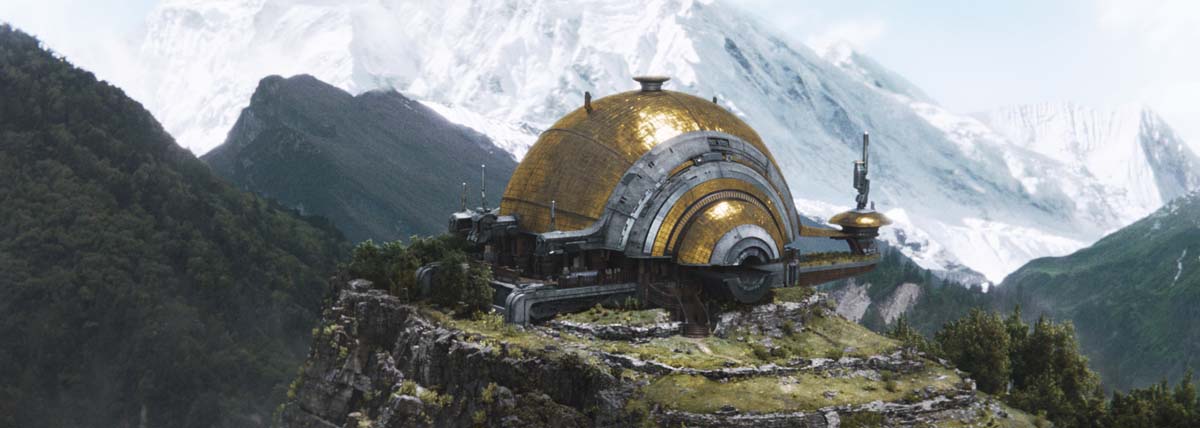
CORWIN: It's good you feel that way. That was the intention. I don't know if you guys go through it, but I've been thinking about how I would change the film if I had another couple of months. You know what I might want to do? It might have been interesting to really truncate — I don't know if this would work at all — the whole prologue on the beach and maybe use that as a thread we keep coming back to. I wonder whether we would have been more impactful with her. Although I think we succeeded. I'm not feeling that she's missing. I do like the non-linear nature because we're dealing with memory.
WALKER: Your use of the footage of them on the beach together — dancing on the beach and things like that — it's brilliant cutting. I love that. Absolutely. And loved it. And also how you used it in the final analysis is what everybody's seeing, and it's just beautiful editing. And on top of it, you're sort of servicing what feels like there's a thawing of a character — seen through the prism of John David's character, Joshua — and there's a very slow thawing of a character who I think I kind of got the feeling watching it that he doesn't realize how much he's lost at the beginning. And it's the sort of journey of discovery of exactly what he's lost so that he's not lost just a pretty face. He's missing the influence of an incredibly good influence, a good person as somebody who sees a way out of conflict bigger than he could even imagine. That I thought was very beautifully measured in the final cut, I have to say.
That's one of those things that is lovely about editing in cinema is that, you could have had some beautiful monologue with him talking about how much he missed her or whatever, but none of it is going to compare to these moments of synaptic thought as he remembers her dancing on the beach and rubbing her pregnant belly and things like that. Those are the things that really make cinema cinema.
CORWIN: But you have to have a director that's willing to buy into that vision, you know? And we were very lucky that Gareth was.
WALKER: Can I ask a question? Something that wasn't in our assembly at all, not even dreamt of was that incredible opening with the sort of fake archival material. How did that come about? It's such a gem.
MORRIS: We wanted to have the audience understand the world and we wanted a fun way into that. And there's so many different ways to start these types of films. You could put text — The Terminator does that very well — kind of introducing you to the sci-fi world. Another thing was also understanding the alternate history that was very important to us, understanding that this had started in the 50s. Throughout the production design, if you see in the film, Gareth has this thing about: there's the past and the future, but nothing in the present. So if you notice, we have cars from the 70s and 80s in the film and then we have cars from 2060 in the film. So it kind of inspired off of that was to try and understand the world-building a bit more, but in a fun way. And he had done something like that in his film in 2014, Godzilla, where he had an archival sequence where the nuclear bomb testing had kind of inspired the Godzilla creature in that film. So, he's a fan of these types of docu-style things. The idea is very exciting for him and for us to put ILM’s and other vendors’ beautiful visual effects into archival footage and kind of create this alternate history. So it stemmed from necessity of bringing the audience in in a way where they kind of understood the world. And it just kept evolving. First it was visual and we had music. And then pretty late in the game, we started introducing this idea of kind of adverts and this voiceover, and it got very fun to have, 50s kind of voices and then we got to do the evolution of that.
WALKER: It's kind of a difficult story to get started in a way that grabs you and you pulled it off. You have to enter the story with two huge back stories, a personal one and a political one. And I thought it was just elegant doing it that way. Loved it.
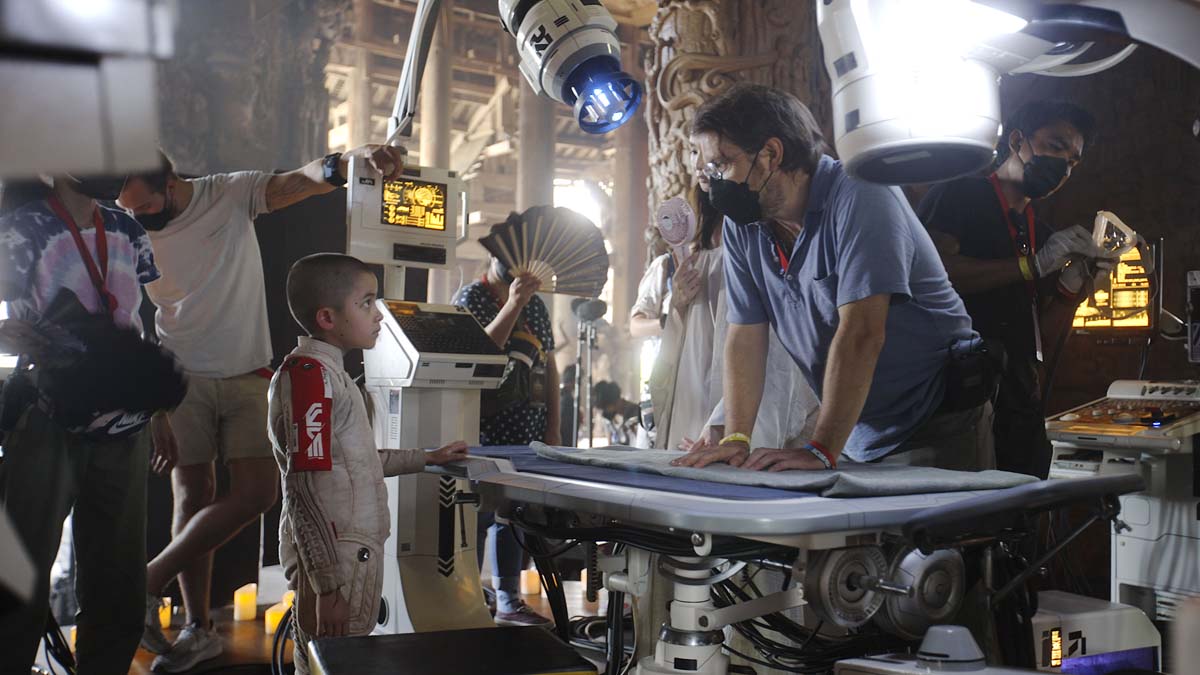 How was the film originally started? Was it started just on the beach with you?
How was the film originally started? Was it started just on the beach with you?
ter BURG: Yes, with a couple of title cards before it, as they were in the script. And I think when Scott and Hank came on board, they quickly started experimenting with that and it sort of started becoming bigger and bigger. And I've seen various iterations of that opening that I see sort of remnants of — sort of the remains of — in the current one. But this has evolved so much and I absolutely loved it. I thought it was a great, great way to set up this whole thing and sort of get you into the world before you actually get to the characters, which — as an audience, sort of attracted and sort of sucked into the world. And then you meet the characters and you go on this journey with them through this world that you somehow at some level have been able to familiarize yourself with somehow.
How did you start working on that sequence? I was going to joke about, “Oh, didn't you just go to Getty Images and pull some stock footage?” But I mean, you could have done something like that to start the concept of it. How did you start editing the idea of it?MORRIS: It stemmed from a conversation we had with Gareth. We were kind of just spitballing in the room ideas and then it just kept evolving and we would kind of throw out these ideas of “what if this? What if that?” And just images and ideas.
Was there any proof of concept for it? That's a lot of stuff that had to get shot to make that sequence. Did you try to do it with like regular stock footage?
Hank's Avid cutting room on the Sony lot.
CORWIN: It was for the most part, that stuff really was regular stock footage and then we processed it. Joe and Job, how did you guys put it together? You had the titles up front and then we went to the beach. Did you put in the explosion?
ter BURG: Not the 2045 explosion, only the one on the beach.
CORWIN: The titles weren't really as impactful as they needed to be. I started experimenting with the stock footage, making it a montage leading into the nuclear explosion. And then we turned it over to Kyle Cooper's company. What is that? Imaginary Forces?
MORRIS: Prologue. (prologue.com)
CORWIN: Prologue. I'm sorry. They were finding other footage. It still was deadly. It was kind of dull. One of our assistant editors, Zachary Harrison, came in and he had this zany take on it, and we looked at it and it's like, “Oh my God, this is amazing.” Ultimately, at the end of the day, our assistant saved the day.
I love stories like that.
Jake is assistant editor Chris Voutsinas' sheepdog. Safety in the cutting room is important.
WALKER: Wasn’t Gareth's approach generally to the VFX of the film to shoot first and ask questions later? He had things in his mind, but all sorts of kind of incredible things were planted on later.
Actually one of the first things I ever saw of his, he'd done a kind of proof of concept short kind of sizzle reel. One of the shots I'd seen, which was you're going along a dirt road and you pass a moped and as you pass the moped, you see there's a hole going through the back of his head. And there were a number of kind of vistas like that, but it was all kind of found footage, a bit like finding archival footage and then riffing on it. It's similar to the approach of the whole film.
ter BURG: I think that Motorbike shot made it into the movie. No?
CORWIN: Yes,
ter BURG: It was taken from that proof of concept reel and it actually ended up in the movie at some point.
I've been to Vietnam before several times and it really felt authentic. Some of the shots, it felt like, “Oh, I just happen to have my handycam shooting out the side of a bus” and that's what I saw.CORWIN: Did you actually see robots on mopeds?
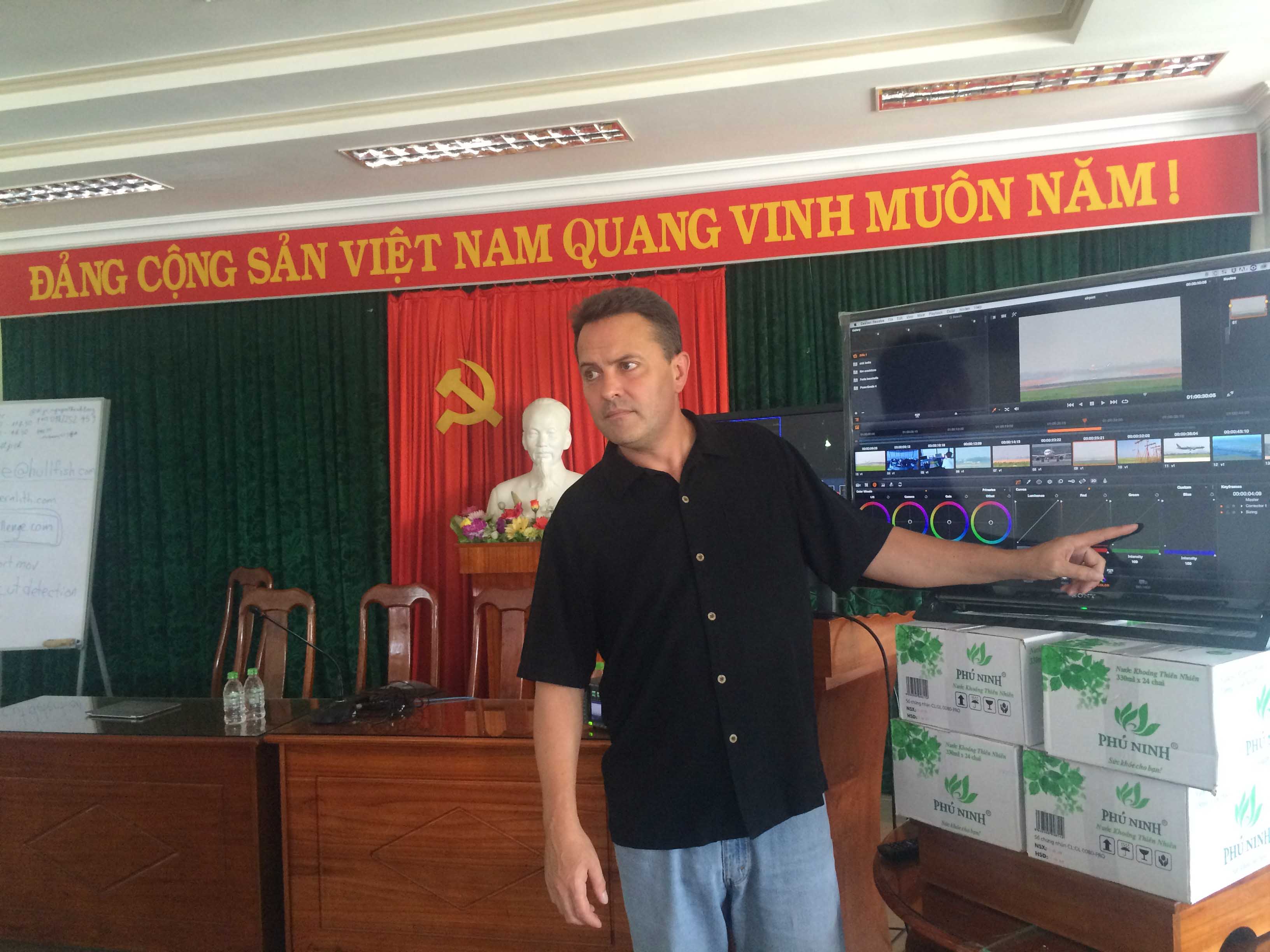 Hullfish teaching color grading in Vietnam, as proof of the story.
I might have, but that's because there's some very interesting drugs in Vietnam.
But let's not talk about that. Joe and Job, when you were cutting during dailies, you couldn’t have had any VFX. Were you working with plates essentially?
Hullfish teaching color grading in Vietnam, as proof of the story.
I might have, but that's because there's some very interesting drugs in Vietnam.
But let's not talk about that. Joe and Job, when you were cutting during dailies, you couldn’t have had any VFX. Were you working with plates essentially?
WALKER: We didn't have a VFX editor.
CORWIN: Well, neither did we! The one thing we had going for us is that Gareth was such a virtuoso. Gareth knew what he wanted. He knew VFX every bit as well as anyone at ILM. They were very reverential around him, wouldn't you say that Scott?
MORRIS: Oh, absolutely, yeah. They respect him and were so excited to work with him.
CORWIN: But it's just such a magnificent way to work to not have everything boarded out. You get such reality. It's just such a great way to work.
Gareth came from a VFX background, correct?CORWIN: Yeah, he's got amazing sensibilities.
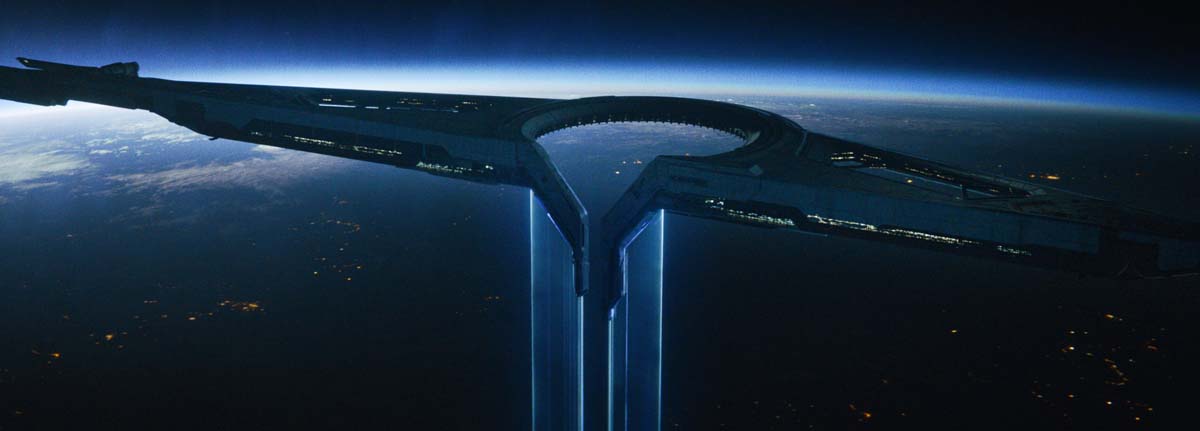 Did that help in any way in editorial that he would just know that something could be done or couldn't be done or?
Did that help in any way in editorial that he would just know that something could be done or couldn't be done or?
MORRIS: Absolutely.
WALKER: Sometimes, of course, you had to just imagine that there would be things that he'd make more of. I think you have to do that with all films that involve a VFX element: you have to kind of find your way into allowing enough space. Otherwise, you know, ten months later you're going to be looking at it in the final DI and saying, “Damn! That shot isn't long enough to sell that point.” So there was a lot of material where the camera was tilting up to something in Gareth's imagination, then back down to a street scene like where he was going past all the neon signs. I remember there was a lot of material where there's people reacting to something, but actually we didn't really know what it was going to be if I'm being honest. I mean, we did discover a storyboard at one point, as Job rightly pointed out, and only about 10% of it was related to what he'd shot. So, he has a very firm grip on his imagination and had things that he was achieving. It wasn't always apparent. You just had to be open to the possibility that a lot of things would be enhanced later. I certainly was very conscious of it when the farmer leaps up, I pick the take where you will see through his head. So you tell the story that he's AI in the shot in the take, there are other takes where he stepped into shot without you seeing it. So things like that, You know the script and you know you've seen the multiple takes and you kind of see what he's aiming for and try and mind read.
CORWIN: But the way you guys put together the last act on Nomad with really nothing — no real points of reference — is masterful. Scott and I were just so, so deferential.
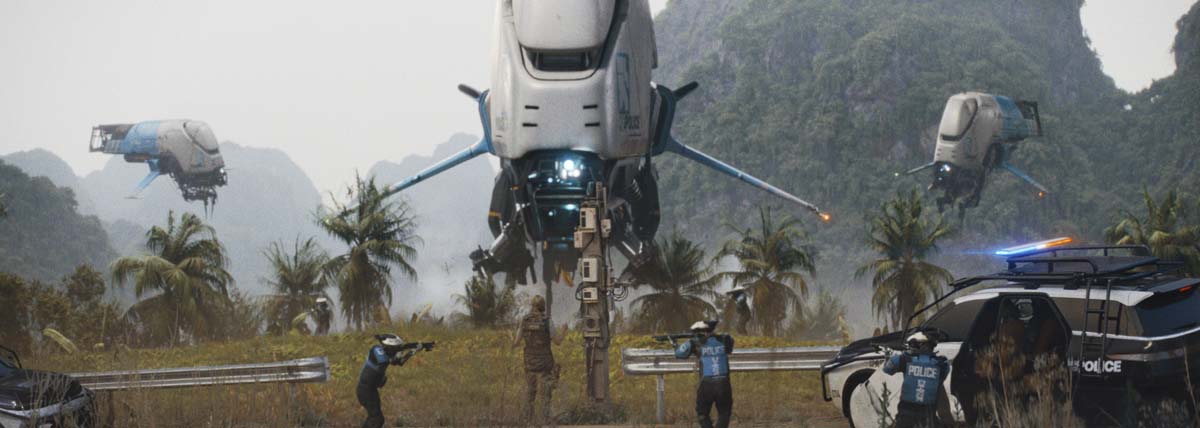
MORRIS: Crazy that you were even able to put that together with no visual effects.
ter BURG: I really appreciated how that ended up in the movie because I think that whole last act was a little over an hour or something in our assembly simply because there was so much and it's been trimmed down, but it's also kept its pace at a tremendous level. There's so much going on at the same time there while still sort of trying to maintain. And that's that's what I really appreciated about the work you did while saving the emotional beats with the characters, those are actually central and all the mayhem around it is sort of trying to sort of enforce that and sort of driving that, the stakes of that emotion. But it's all about the emotional beat there.
In terms of what Joe was saying, we wouldn't always know what was there, but even Gareth wouldn't always know. So when you'd ask him, “They're looking up. What exactly are they seeing?” And his idea was, “They're seeing something” and we can see whether it's like a bunch of moving trees that will eventually be a tank or whether it's all the birds are flying away because something is approaching or maybe there's going to be a couple of missiles flying over. So it could be various things.
The way he was ad libbing on set, he is ad libbing in post in many ways.
WALKER: I love this. This is part of the thing I most love about filmmaking. I worked once with a director who used to be an actor and he was in Zeffirelli's Jesus of Nazareth. And this friend of mine who was one of the disciples — he played, Matthew — said that he'd spent the whole time in the bar. Everybody was absolutely pissed as a part of that film, and I think Mary as well was absolutely stoned out of her head. Robert Powell: those beautiful blue eyes can't see further than a foot away from his head. So when he was in any scene, he actually couldn't see anything at all. And especially when the sun was going in his eyes. And I always loved the story that my friend who played Saint Matthew said they were all hauled out the bar at some point, and Zeffirelli got them to stand on the side of a mountain. And he said to them, “Okay, it's a miracle and… Action.”.
ter Burg: Steve, in regards to that tank battle scene, one of the things that was really helpful is that our production sound mixer had come up with the idea of putting a wireless mic on Gareth, our director for the entire shoot. So whenever we were watching dailies, we could pull up the original audio and find track eight or something. And on track eight there would be Gareth giving directions while he was shooting. So that helped me out, especially when when I was figuring out all these drone shots in that big tank battle sequence where it was not always clear what they were trying to achieve. And we had a lot of resets and stuff, but it was very helpful to sort of hear what he was going for so that it made it easier for me to find out what I was actually looking for within all that footage. So I felt that was a neat little trick and I thank the production sound mixer for thinking of that because it was really helpful.
Because so much of the movie had to get cut out and you're trying to save those great emotional beats were there screenings for audiences where you had to say, “Oh, they're not getting it, we need to go back in because we cut out something that they need for the next thing?” Or how did you maintain the story with cutting out half of the material?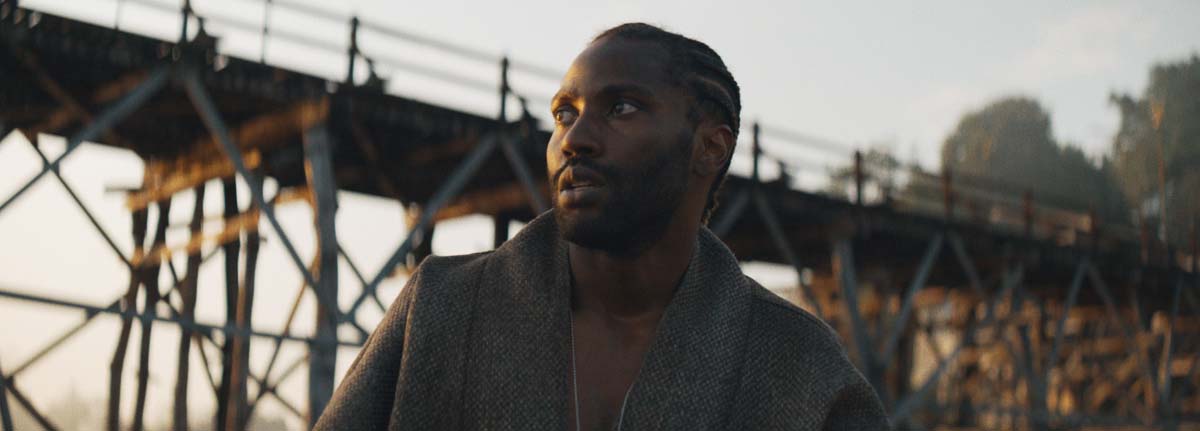
CORWIN: We tried to have friends and family screenings, but it was always dicey because we wouldn't have most of the VFX, so they didn't know what the heck they were looking at. Basically, we picked up from like the vibrations in the room, what people liked. Who knows if we were accurate?
Scott Thoughts on that? Were you part of those? I'm sure.MORRIS: In the very early days of those screenings, there was just nothing. And eventually we got a handful of shots from ILM and we made a little sizzle at the beginning and Gareth explained, “Okay, this is what a robot's going to look like.” And it was early days, so we asked our friends and family to really imagine quite a bit. So, we ended up having a lot of text on screen to help them, but it wasn't the usual feedback you could get from a screening like that because they had to use their imaginations as well. But it was helpful to go through that process. There were some expositional things I think that we knew we could explain or didn't have to explain, but a lot of times we were relying on the visual effects, knowing that, “Oh, once the visual effects are in for this scene, people would understand it.” And they did! It totally paid off once ILM and the other vendors did their work.
Did you have to add a bunch of ADR at various points to try to get back exposition that was then missing when you cut two hours out of the movie?CORWIN: We did, and then we found that as we were getting in VFX, we were able to eliminate a bunch of ADR. Initially some of the questions were very, very rudimentary. Like, “Well, who's a robot?” “What's the difference between a robot and AI?” We didn't have any demonstration, so right away the entire screening would go off the tracks.
 Because people couldn't see the little holes in the head because in the dailies, they just looked like humans.
Because people couldn't see the little holes in the head because in the dailies, they just looked like humans.
CORWIN: Yeah, pretty much.
ter BURG: There were just title cards: “AI,” “ROBOT,” “SPACESHIP” going through the screen.
WALKER: The early screening I saw had little words saying “AI” following somebody’s head around. It was really hard to tell the story in those early cuts before the VFX were done.
Hank, I came to several of your screenings of Vice and I admired how bold the differences between cuts that you would put in front of family and friends were. It's kind of fearless that big chunks would be there one week and then disappear and try something else. It's a real kind of fertile ground for you as an editor, I think., isn't it?
I mean to me, the kind of screenings of the things that I've been working on recently: sometimes the differences between the 19th fine cut and the 20th fine cut are that I move one scene and I shortened another and we've got a load of new VFX in and I'm trying out a piece of music that we didn't try out. There'd be sort of 30 small things different in each reel, whereas the difference between the first fine cut and the second fine cut for you is an hour and material in a completely different order. Towards the end, it's fine detail that's changing — whether you've got complete clarity on something, and whether people are feeling things the way that you want to and that you sort of sense that from the room. But I was remarking on Vice because I think there were sort of quite bold changes between one cut and the other. There was a whole version with the younger Dick Cheney in one screening, and then that was gone in the other: you would try a whole different tack on storytelling.
CORWIN: And that was a mistake, in retrospect, I wish that the young Dick and Lynne had remained.
WALKER: The fly fishing.
CORWIN: Yeah, it was lovely.
We don't get some of those things that we want to get in. Correct?WALKER: I didn't mean to bring back any regrets! I was really trying to compliment you on the fact that you go further than most editors I know to kind of smash something and then put it back together again in a new fashion.
CORWIN: It's so important, Joe, don't you think? It takes a degree of courage. I'm basically a timid guy. I'm a fearful person. It's I think, why I sit behind screens and machines. If you want to be a good editor, you really have to have integrity. If something isn't working as well as maybe it could, you owe it to yourself — forget the director, forget the audience — you owe it to yourself to try to make it as good as it can be. Honestly, that's been my motto from the beginning.
It does take some not only imagination, but determination to try things that are not scripted, that are completely out of the context of the movie as it was written and even maybe shot.CORWIN: Yeah, but try that with some directors who don't appreciate it.
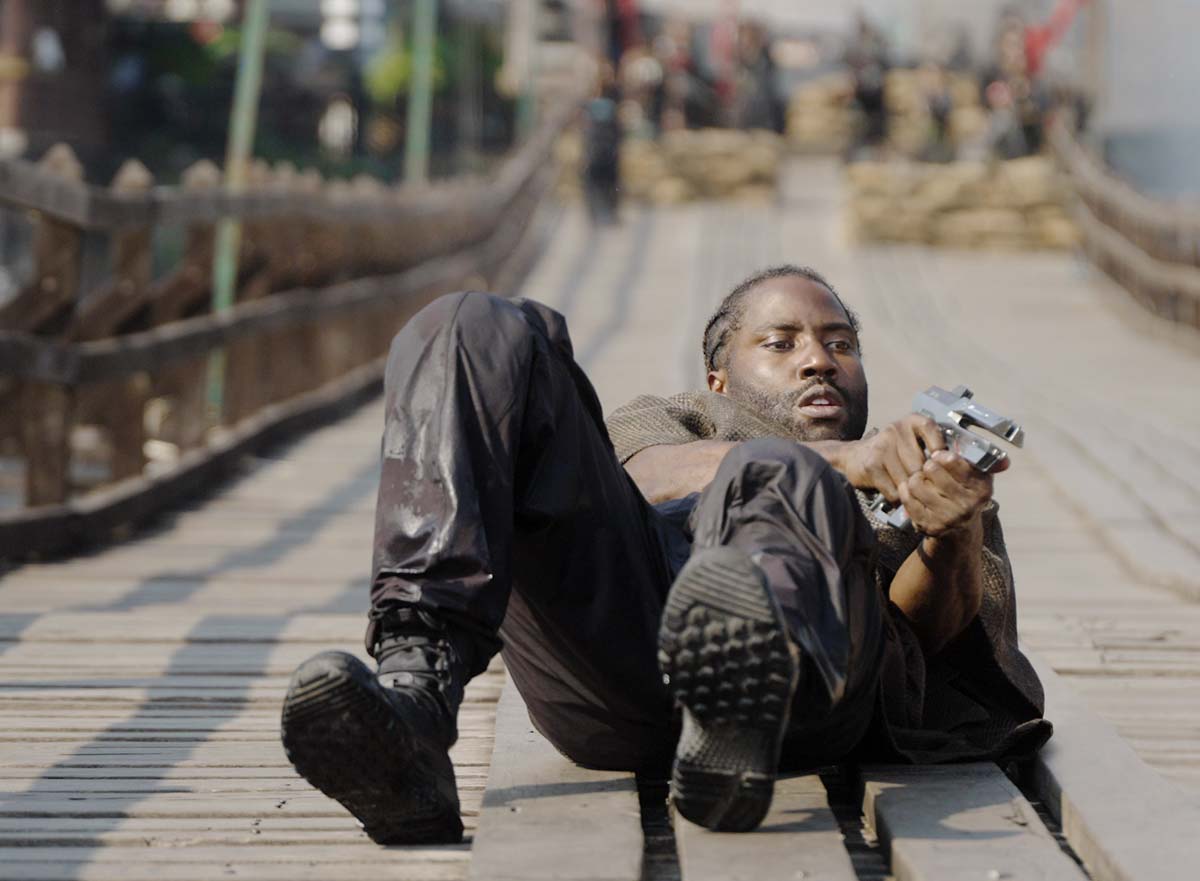 That idea that Joe's talking about — Hank, we've talked about your early editing and that seems to play into it — that you were kind of cutting with stuff that wasn't supposed to go together the way it went together, like bits and pieces of TV commercials that were left over instead of what was supposed to get used.
That idea that Joe's talking about — Hank, we've talked about your early editing and that seems to play into it — that you were kind of cutting with stuff that wasn't supposed to go together the way it went together, like bits and pieces of TV commercials that were left over instead of what was supposed to get used.
CORWIN: I think we each have our journeys. I think they're social and cultural. Think Joe and Job come from a different world. I think Scott's closer to me, although he's considerably younger. I think we each have our journeys and we we approach material in our own unique ways.
WALKER: I've to say we all went to a screening of JFK last week at the Academy Museum, and that was spellbinding to see something unbelievable after that period of time. And it grips you so hard and the kind of boldness of the cutting and the different formats. It was kind of stunning to watch.
Gentlemen, thank you so much for your time and thanks for being on Art of the Cut. This was so interesting to talk about.ter BURG: Always a pleasure, Steve.
WALKER: Thanks, Steve.
CORWIN: And congratulations on getting into ACE, Steve.
MORRIS: Thanks Steve. Congratulations.

